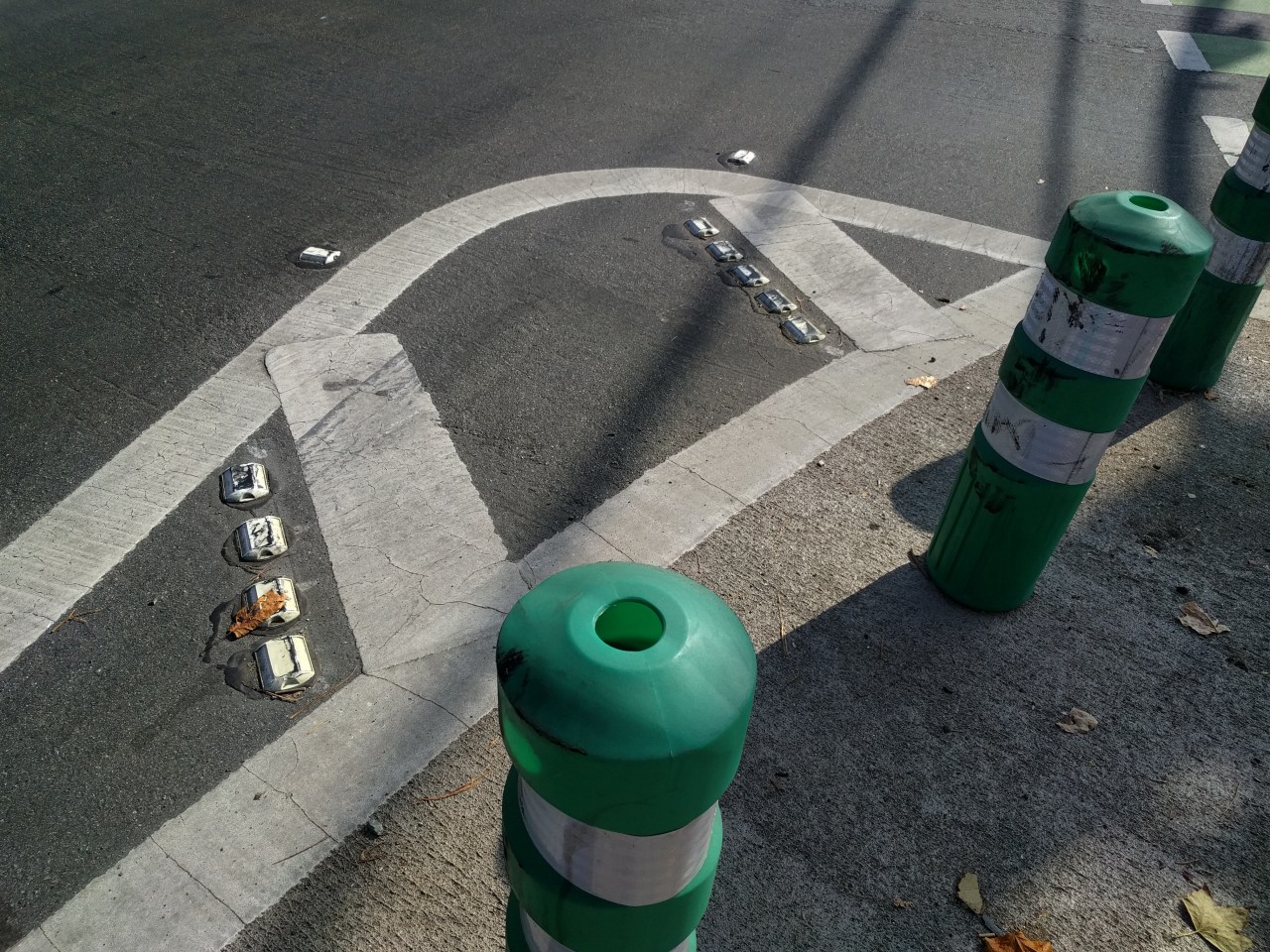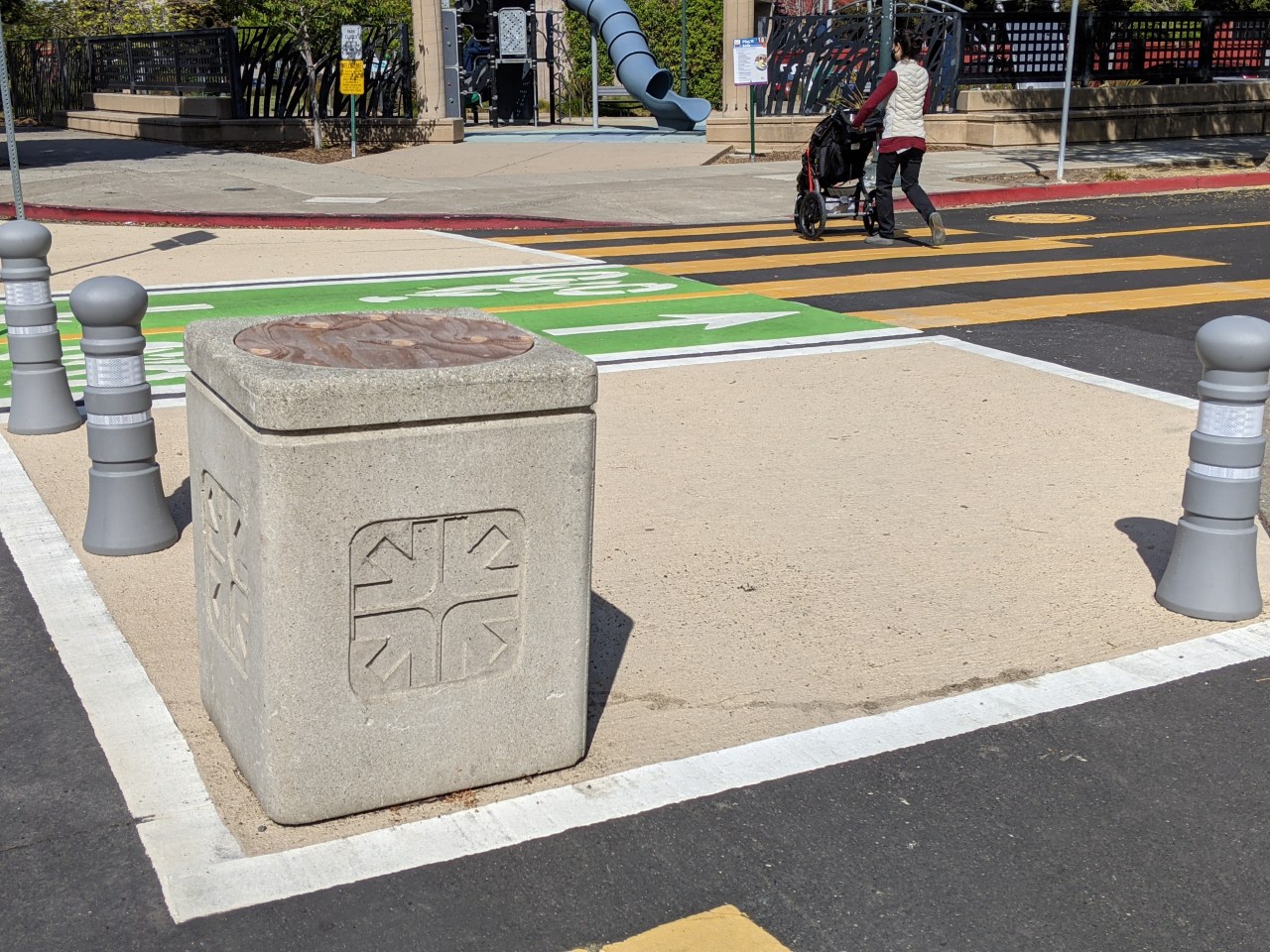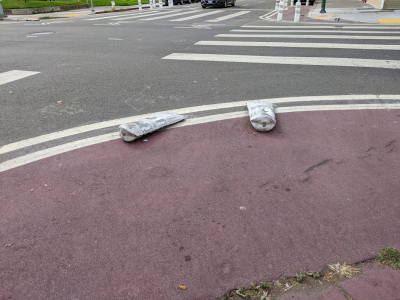Note: GJEL Accident Attorneys regularly sponsors coverage on Streetsblog San Francisco and Streetsblog California. Unless noted in the story, GJEL Accident Attorneys is not consulted for the content or editorial direction of the sponsored content.
Two years ago, the city of Oakland released a study showing positive results for their new, quick-build protected intersections around Lake Merritt BART. However, shortly thereafter, the city decided to abandon maintenance of the corner posts--the part of the protected intersections that actually force motorists to slow down as they turn into the crosswalks.
"OakDOT has found that the style of post (i.e., K71) in the photos ... is not sustainable to maintain," wrote Karen Boyd, communications director for the city. "The posts are not being selectively reinstalled based on their locations at a given corner."
The reason for this: "the posts at the apex of the corner are the most likely to get hit and go missing."

This, of course, misses the point of a protected intersection--if motorists are hitting these posts, it's because they've figured out that they're not going to damage their cars. They're not slowing down, defeating the purpose of the installation.
"At Lake Merritt BART a utility project that removed the posts and never replaced them has also been an issue," wrote Bike East Bay's Robert Prinz, in an email to Streetsblog. "There have been a great many utility project impacts like this with missing striping, posts, and other elements at project close-out around Oakland. I have tried bringing this to OakDOT's attention but haven't been able to get much movement on solutions yet."
One of the reasons the corner posts are getting hit is OakDOT departed from standard protected intersection design. As transportation expert Vignesh Swaminathan explained in a previous post, "dual-radii" is required; there needs to be an outer turn with a low curb, bumps, or some other kind of treatment to warn motorists that they're taking the turn too quickly. That helps protect the post from getting run over by all but the most egregious drivers.

But from Streetsblog's view, there's a bigger problem here: an attitude persists that when motorists drive dangerously, the solution is to accommodate such driving. What OakDOT should be doing, if they're serious about safety, is looking for ways to bolster and protect those apex posts and force drivers to slow down, even if it causes damage to cars occasionally. In Emeryville, on Doyle Street, this was accomplished by using the same category of posts but painted gray to look like concrete. Interspersed with the posts are garbage cans, made of real concrete--in other words, if a motorist really is determined to drive at an unsafe speed and run over posts, they're going to crash before they run down a pedestrian or a cyclist.

And to be clear: this has nothing to do with money. Concrete is cheap. And Emeryville used surplus trash cans. Unfortunately, OakDOT has taken the opposite approach.
On occasion, OakDOT tries to get this right, or at least closer to right. "The Telegraph Temescal corners were designed with the rubber corner bumpers from the start, not as replacements, based on the lessons learned from other installations like at Lake Merritt BART. So far I've seen these locations survive a lot better than the spots where flex posts were installed right to the corner without the bumpers," added Prinz. "I think it makes sense in areas where trucks or other vehicles will make wider turns, still forcing slower turns but without as much ongoing maintenance. I've seen this at concrete-protected intersections and traffic circle installations as well, with a mountable curb section along the outside edge."
Whatever the solution though, a "safety-first" culture doesn't respond to car strikes and reckless driving by punting key safety features. "While continuing to pursue the intent of these posts, OakDOT is transitioning to more durable materials: concrete when project budgets and timelines allow, and surface-mounted interlocking plastic curb when a quicker treatment is necessary," said Boyd. "As we learn from these pilot treatments, OakDOT also is working to develop a longer-term maintenance strategy for locations where they were installed."






